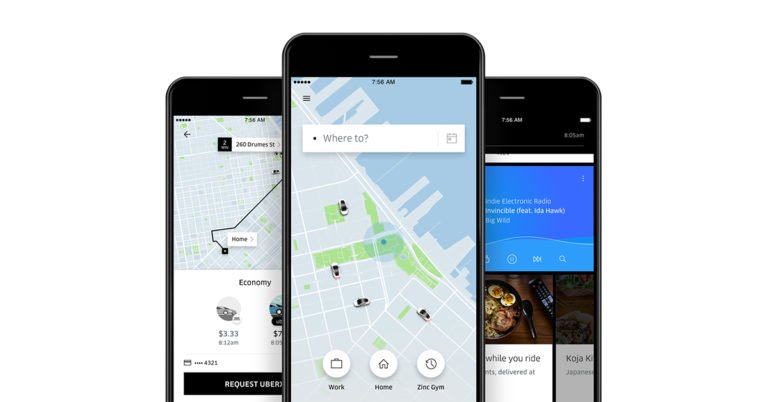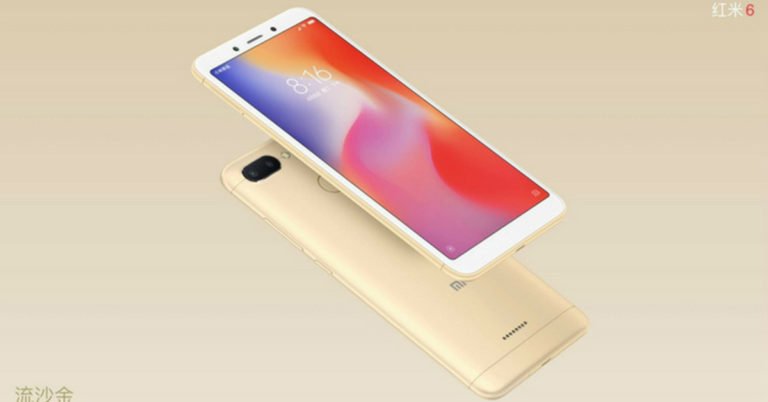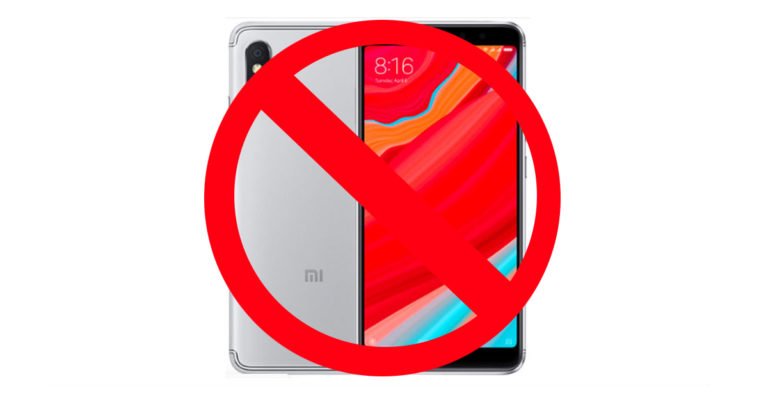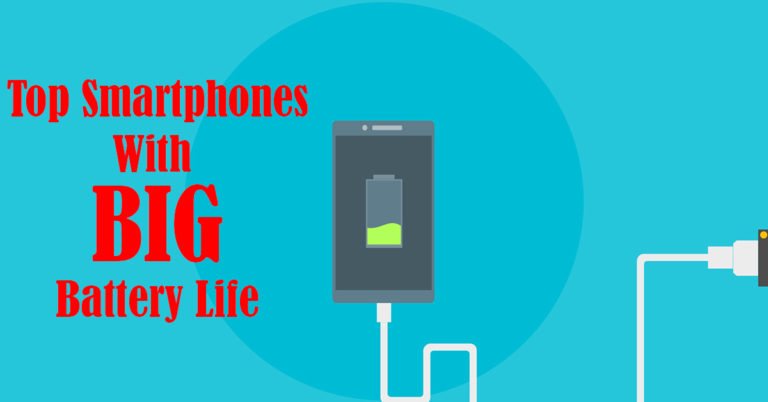Google Pixel owners will soon be able to choose the colour of their launcher: Report
Technology giant Google may soon let the users of Google Pixel series of smartphones select the colour of their smartphone’s launcher from light to dark mode according to a report in Android Police.
Till now, the launcher in Google Pixel phones automatically turned dark when users had a dark wallpaper on. This is even the current situation. Your theme depends on your wallpaper. So if your wallpaper is dark, so are your folder icons, app drawers and quick setting. Similarly, if your wallpaper is white in colour or has a neutral shade, the launcher your Pixel smartphone will automatically turn white.
Much to the frustration of many users, they cannot manually select one among the two themes if they have a preference for it. But it seems like now Google is changing this. This is because someone had added an item in the developer preview in March this year in which they had asked for a toggle to choose the theme.
And Google has now marked that particular item as ‘fixed’ in the bug tracker. Google’s reply says, “We have added support for a Dark theme to be applied to quick settings and launcher under Settings -> Display -> Device Theme. It will be available in a future Android build.”
So with this, users will be to go to the device’s settings, and make customizations to their launcher settings under Device Theme.
In other words, you will be able to select the dark or light launcher based on your preference and you will not have to select a particular wallpaper to enable it.
However, if users are expected to enable or customise these settings in Google Pixel phones, then it is definitely a possibility that the default settings will be exactly as they are right now – light launcher with white or neutral wallpapers and dark launcher with dark coloured wallpapers. The report by Android Police says that this change may arrive with the next developer preview, but one can expect it to be live by the time Android 9.0 officially rolls out.
[Video] OnePlus Bullets Wireless headphones Unboxing
OnePlus Bullets Wireless headphones were announced at an event in london recently, these will be available in the Indian market at Rs 3,990.
Tech Specs:
- Magnetic Control
- On wire volume keys and call button
- Quick charge function
- 8 hours battery backup
- 10 min charge, 5 hour battery backup quick charge
- Water resistant
- Bluetooth 4.1
- 10 Meter effective range
Reliance JIO and Airtel to live stream Fifa World Cup 2018 matches for free
Today is the opening ceremony and first match of the largest football sporting event in the world. Yes, the Fifa World Cup 2018 will commence tonight as Russia takes on Saudi Arabia at 8:30 PM. The Fifa action is so big that the leading Indian telecom players could not stay away from it.
Both, Airtel and Reliance JIO have announced that their customers can watch the matches for free on their respective live TV apps on the mobile phones. All the matches of the Fifa world cup would be available to Airtel and Reliance JIO customers between June 14 to July 15, 2018.
Along with English and Hindi commentary, these matches will be available in all the local languages on the Airtel app. Over that, users will have access to the complete match schedules, summary and behind the scenes footage here. The Airtel TV app is available on the Android and iOS app stores.
Reliance JIO is also giving similar viewership to its customers where they can also enjoy this premium service for no additional cost. Users on both iOS and Android smartphones can download their app and enjoy uninterrupted coverage of the Fifa World Cup 2018.
Along with the Fifa World Cup 2018 live coverage, both the telecom players have announced that they will also live stream India Vs Afghanistan cricket matches on their respective platforms, too. Seems like a good day for sports enthusiasts and if you are a customer of Reliance JIO or Airtel then you are in luck as you can watch the matches (cricket or football) from anywhere for free.
Coming to think of it, network issues could play spoil sport as Airtel’s 4G is very patchy even in cities like Delhi, Mumbai and Gurugram. On top of that at times, rains do short circuit mobile towers, which will again hamper connectivity. Fingers crossed is all we can say, if you are on an Airtel network.
Vivo Nex S and Nex A smartphones with bezel-less, notch-less display and pop-up selfie camera launched: Specs price and other details
When Vivo’s concept smartphone Apex was showcased at the Mobile World Congress 2018, it did get some eyeballs rolling. The smartphone’s prototype was earlier seen at the Consumer Electronics Show this year and managed to grab headlines even then. The reason was its ‘half-screen in-display fingerprint scanning technology.’ With this technology, instead of putting one’s thumb or finger on the thumbnail-sized icon on the device to unlock it, one can do so by placing their finger anywhere on the smartphone’s display – or at least half of it. And now, the Chinese smartphone maker has announced its Nex S smartphone, which is based on the Apex concept phone.
Although Nex S does not have Apex’s ‘half-screen in-display fingerprint scanning technology,’ there are a number of features in it that we saw in Apex. To put in Vivo’s words, the Nex S smartphone “fulfils the bezel-less dream.” The Nex S smartphone – like the Apex concept phone – comes without the Notch on its display and we found this to be very refreshing. This also means that the Nex S smartphone has a screen-to-body ratio of 91.24%. That’s not all. Vivo Nex S also comes with the company’s glass-vibrating Screen Soundcasting technology, that was also seen the in Apex concept phone. This technology replaces the earpiece speaker found in devices.
Instead of Apex’s half-screen in-display fingerprint scanning technology, Vivo Nex S comes with an in-display fingerprint sensor. The difference between the two is only in the area covered. Although in-display fingerprint sensor is a feature we have already seen in Vivo X21, Vivo claims that its third generation sensor makes the speed faster.
Specifications
Speaking about other specifications of the Vivo Nex S Smartphone it features a 6.59-inch full-HD+ Super AMOLED display and is powered by Qualcomm’s Snapdragon 845 processor – which the latest in the market. Vivo Nex S smartphone comes with 8GB RAM and comes in 128GB and 256GB storage options. It houses a 4000mah battery and sport a 12MP primary rear camera with f/1.8 lens and a 5MP secondary rear camera with f/2.4 module. For selfies, there is an 8MP pop-up front facing camera with f/2.0 lens. The smartphone run Android 8.1 Oreo skinned with Funtouch OS 4.0.
Other than this, the company also launched a younger sibling, Nex A smartphone, that has a number of features similar to Vivo Nex S, but there are things that set them apart too. For starters, the Nex A is powered by Snapdragon 710 processor clubbed with 6GB RAM and offers 128GB inbuilt storage. A major difference is that unlike Nex S, Vivo Nex A has a fingerprint sensor on the rear panel instead of the in-display one. The display, camera setups and battery is the same as Vivo Nex S.
Pricing
Both the smartphones are currently only available in China. While the Vivo Nex S smartphone with 8GB RAM and 256GB internal storage is priced at CNY 4,998 (roughly Rs 53,000), and its 8GB RAM and 128GB storage variant costs CNY 4,498 (roughly Rs 47,500). The Vivo Nex A, which is only available in 6GB RAM/128GB on-board storage option, bears a price tag of CNY 3898 (roughly Rs 41,200).
[Video] Comio X1 Note Unboxing and First Impressions
Comio X1 Note Tech Specs:
- MediaTek MT8735 1.45GHz Quad-Core processor with Mali-T720 GPU
- 6-inch (2160 x 1080 pixels) FHD+ display with 2.5D Curved Glass
- 3GB RAM with 32GB internal memory, expandable by up to 128GB with microSD card
- Dual SIM (nano + nano + microSD)
- 13MP rear camera with LED Flash and f/2.2 aperture. 5MP secondary rear camera with f/2.4 aperture
- 8MP front-facing camera, f/2.4 aperture with LED flash in front too
- Fingerprint sensor
- 3.5mm audio jack, FM Radio
- 4G VoLTE, WiFi 802.11 a/ b/g/n, Bluetooth 4.0, GPS, USB OTG
- 2,900mAh battery
- Android 8.0 (Oreo)
Uber Lite launched in India: Everything you need to know
Uber Technologies has launched its Uber Lite app in India — a move which many are saying has been done to get more users on board.
In its initial phase, Uber Lite will only be launched for Android smartphone users in Delhi, Jaipur and Hyderabad. This will be followed by the app getting rolled out across India during summer and then Uber Lite will be launched in other countries.
What makes Uber Lite different from the regular Uber app is the fact that it is less than 5MB. It is claimed to have a response time of less than 300 milliseconds and can work perfectly well in areas with low connectivity.
The company went on to say in a statement that Uber Lite works on less than 5% Android devices.
Besides this, the app retains most other features of the main Uber app. It hasn’t compromised on the safety features and comes with an emergency button and also lets users share their route with friends.
However, some features are different. For instance, in the absence of GPS, the app might suggest a nearby landmark where the cab can come to pick the user up. Similarly, the app already has the city’s most popular places so that they appear even when the user is offline.
According to Uber Technologies, maps are not loaded by default in Uber Lite and are available at a tap when user needs them because this ensures that the app is light and works quickly even in low network connectivity.
“After extensive research with our riders, it was obvious we couldn’t just make a smaller copy of Uber. We needed to reimagine the experience for India and key markets around the world. The result is Uber Lite,” said Peter Deng, Head of Rider Product, Uber.
Xiaomi Redmi 6 launched with 5.45-inch HD+ display: Price, specs and more
There were leaks and teasers flying about this phone and finally the Chinese maker has brought it to life. Called Xiaomi Redmi 6, the smartphone has been launched in China and integrates some new features that will be seen on upcoming Xiaomi smartphones (too) like the face unlock feature. Seems like Xiaomi is using AI in this device for various things ranging from the face unlock to it the cameras.
Xiaomi Redmi 6 specifications
The event held on Tuesday showcased the Xiaomi Redmi 6 with a HD+ 5.45-inch touchscreen with a resolution of 720×1,440 pixels. The aspect ratio is set at 18:9 and 80.7 percent screen to body ratio is what this phone has. As for the cameras, the Xiaomi Redmi 6 has dual rear cameras that are stacked just like the ones found on the OnePlus 5T. These are powered by 12MP plus 5MP sensors and both sport 1.25 micron pixels with AI firmware. Spin the phone around and one will find that the company has placed a 5MP front snapper.
Under the hood Xiaomi has given this smartphone, not a Snapdragon, but a MediaTek Helio P22 octa-core CPU which has speeds up to 2.0GHz. The Xiaomi Redmi 6 is available in two variations. One with 3GB RAM and 32GB memory and other has 4GB RAM and 64 GB memory. This seems to be the usual norm for all budget smartphones these days.
Storage is expandable in the Xiaomi Redmi 6 and one can insert up to 256GB microSD card in this smartphone, over the already available memory inside. As for the battery life, while others in the category are giving more than 3,400 mAh, Xiaomi is still stuck on 3,000 mAh. Other features of the mobile phone include 4G LTE, Wi-Fi, GPS, micro USB, Bluetooth 4.2 and 3.5mm audio jack. Xiaomi Redmi 6 weighs 146 grams and runs Android Oreo 8.1 with its own MIUI skin on top.
Xiaomi Redmi 6 Price and availability
The price of the Xiaomi Redmi 6 3GB RAM/32 GB storage variant has been kept at CNY 799 (that is approximately Rs 8,500) and the 4 GB RAM/64GB storage version has a price tag of CNY 999 (Rs 10,500 approximately). It will start selling in China on June 15, however there is no word of its launch in India. Nonetheless, going by the trend that this Chinese maker follows, they should bring the phone to our shores in a months’ time.
Selfie obsession: Two teenagers drown in river Tapi
While the smartphone has made life easier for many, it has caused a lot of trouble for some too. Starting from distracted driving to selfie deaths, the list just goes on. Adding to the selfie death list, two teenagers from Surat drowned in the Tapi river while trying to click a selfie. The two boys were hanging on a rope over the river when they fell in to it while capturing a selfie.
As per a report in Indian Express, two other boys who jumped in the river to save them were rescued by the bystanders and are currently undergoing treatment at New Civil Hospital. The four friends, Ikhlak Shaikh, Sohel Khan, Mohammed Zaid and Mohammed Kaif had gone to the causeway over the river. Here Shaikh and Zaid lost their balance and fell into the river while taking a selfie.
Bodies of the boys were later recovered by the fire brigade officers and declared the boys had died to due to drowning in the river. As said before selfie deaths are not new and have been happening in India and abroad at a constant pace. There needs to be some kind of education program running for people that tells them how to be safe and what not to do, especially the younger generation who takes thrills while clicking an action selfie in deadly environments.
Last year two youth in Mumbai died too taking a selfie at a railways station. Delhi has also seen its share of deaths while people are taking selfie on the railways tracks. Recently a young Indian boy just out of his teens died slipping from a 40-meter cliff in Australia. Parents should also take note of the at-times menace called a selfie and tell their children always to be safe when clicking one alone of with a group of people.
5 reasons why not to buy the Xiaomi Redmi Y2
Xiaomi might be leading smartphone player currently in India, but with the latest launch they do seem to have lost the plot quite a bit. They recently launched the Redmi Y2 in the Indian market, which is just a remodelled version of the Xiaomi Redmi S2 that was showcased in China a little while ago.
The Xiaomi Redmi Y2 failed to excite us on multiple levels and to us this phone is not a worthy buy at all, because of the heavy competition it faces from its own brother the Note 5 Pro and other brands like Realme, Honor and Motorola. Specs to price-wise we found this smartphone to be mediocre and here are 5 reasons why you should skip this smartphone:
Price: The Xiaomi Redmi Y2 is priced at Rs 9,999 for the 3GB RAM and 32 GB memory variant, and Rs 12,999 for the 4 GB RAM and 64 GB memory version. It is eating into its own siblings range, the Redmi Note 5, which is priced at Rs 9,999 for 3GB/32GB, however the Redmi Note 5 4GB/64GB version is a thousand rupees cheaper. Over that, the good looking Realme 1 is thousand rupees cheaper than both of them, priced at Rs 8,999 for 3GB/32GB piece and Rs 10,990 for 4GB/64GB version. Why do you want to spend more?
Seen form factor: Putting it simply, the Xiaomi Redmi Y2 has no great shakes when it comes to its form factor. The dual lens setup has become mundane and the plain jane looks just don’t work these days. There is no zing in this phone, which the youth wants these days. In a sea of great looking phones like the one from Realme and Moto G6 Play, the Y2 looks quite dreadful.
Plastic body: While most phone manufacturers like Motorola and Honor are giving glass backs or metal bodies, Xiaomi is busy cutting corners and is providing a plastic unibody thats looks tacky and not appealing. You are better of purchasing a top of the line glass back than plastic, if you as us.
Not a Full HD Screen: The 5.99-inch display on the Xiaomi Redmi Y2 supports only a 720×1,440 pixels resolution. Which is not even close to what its sibling at a cheaper price gives. The Redmi Note 5 has FHD+ graphics 1,080×2,160 pixels display, which is much higher than the Y2. Don’t know what Xiaomi was thinking when building this phone.
Smaller battery: This is probably the biggest flaw of Xiaomi Redmi Y2, it just does not have that much battery juice. While Realme 1 gives you a powerful 3,410 mAh battery, Moto G6 Play is even better at 4,000 mAh. the Xiaomi Redmi Y2 has just 3,080 mAh at a higher or similar price. Most want longer lasting devices and this is definitely not one of them.
Top 10 smartphones with big battery life
Tired of battery woes and can’t wait to replace your smartphone? We have made a list of 10 recently launched smartphones you can choose from. Here’s a look at our list:
Huawei P20 Pro
We won’t be surprised if you get reminded of triple rear cameras the moment you hear of Huawei P20 Pro. Theo 40MP+20MP+8MP triple rear camera setup is the key feature that makes the smartphone stand out. But it isn’t the only feature of the smartphone worth talking about. Huawei’s flagship boasts of a massive 4000mAh battery as well. Huawei P20 Pro is priced at Rs 64,999 and is powered by 1.8GHz octa-core processor clubbed with 6GB RAM and 128GB onboard storage. The smartphone runs Android 8.1 Oreo skinned with EMUI 8.1 and features a 6.10-inch touchscreen display.
 Moto G6 Play
If you are looking for a big battery smartphone and also want phone that has been launched recently, then Moto G6 Play is the right choice for you. Priced at Rs 11,999, the newly launched smartphone packs a 4000mAh battery and features a 5.7-inch HD+ display. Powered by Qualcomm Snapdragon 430 processor clubbed with 3GB RAM and 32GB of internal storage, the smartphone runs Android 8.0 Oreo out of the box. It comes with 13MP rear camera and an 8MP front facing snapper for selfies and video calls.
Coolpad Note 6
Coolpad Note 6 comes in two storage variants – 32GB and 64GB. However, both these variants have the same 3GB RAM. Coolpad’s smartphone packs a 4070mAh battery and features a 5.5-inch full-HD display. Running Android 7.1 Nougat, it is powered by an octa-core Qualcomm Snapdragon 435 processor and sports a dual front camera setup with 8MP and 5MP sensors along with a 13MP rear camera. While the 32GB variant of the smartphone is priced at Rs 8,999, the 64GB variant costs Rs 9,999.
InFocus Vision 3 Pro
Priced at Rs 6,999, InFocus Vision 3 Pro comes with a 4000mAh battery and features a 5.7-inch HD+ screen. Powered by 1.3 GHz quad-core Mediatek M6373 Cortex-A53 processor paired with 2GB RAM, the smartphone offers 16GB of internal storage and can hold microSD cards of up to 64GB. The Android 7.0 Nougat based smartphone comes with 13MP+5MP dual rear cameras and an 8MP selfie camera.
Moto G6 Play
If you are looking for a big battery smartphone and also want phone that has been launched recently, then Moto G6 Play is the right choice for you. Priced at Rs 11,999, the newly launched smartphone packs a 4000mAh battery and features a 5.7-inch HD+ display. Powered by Qualcomm Snapdragon 430 processor clubbed with 3GB RAM and 32GB of internal storage, the smartphone runs Android 8.0 Oreo out of the box. It comes with 13MP rear camera and an 8MP front facing snapper for selfies and video calls.
Coolpad Note 6
Coolpad Note 6 comes in two storage variants – 32GB and 64GB. However, both these variants have the same 3GB RAM. Coolpad’s smartphone packs a 4070mAh battery and features a 5.5-inch full-HD display. Running Android 7.1 Nougat, it is powered by an octa-core Qualcomm Snapdragon 435 processor and sports a dual front camera setup with 8MP and 5MP sensors along with a 13MP rear camera. While the 32GB variant of the smartphone is priced at Rs 8,999, the 64GB variant costs Rs 9,999.
InFocus Vision 3 Pro
Priced at Rs 6,999, InFocus Vision 3 Pro comes with a 4000mAh battery and features a 5.7-inch HD+ screen. Powered by 1.3 GHz quad-core Mediatek M6373 Cortex-A53 processor paired with 2GB RAM, the smartphone offers 16GB of internal storage and can hold microSD cards of up to 64GB. The Android 7.0 Nougat based smartphone comes with 13MP+5MP dual rear cameras and an 8MP selfie camera.
 Xiaomi Redmi Note 5 Pro
Probably the most talked about budget smartphone of the year is Xiaomi Redmi Note 5 Pro. The smartphone has great specifications and is available in two storage variants – 4GB RAM/64GB storage and 6GB RAM/64GB storage. While the 4GB RAM version is priced at Rs 13,999 and the 6GB RAM variant is priced at Rs 16,999. With a 4000mAh battery, it is a good option for those who want to buy a smartphone with a long lasting battery.The smartphone features a 5.99-inch full-HD display and is powered by a Qualcomm Snapdragon 636 processor. For imaging duties, Xiaomi Redmi Note 5 Pro comes with 12MP+5MP dual rear cameras and a 20MP front facing camera.
Infinix Hot S3
The smartphone from Infinix packs a 4000mAh battery and features a 5.65-inch HD+ 2.5D Full View display. Powered by an octa-core Qualcomm Snapdragon 430, it comes in two storage variants – 3GB RAM/32GB storage and 4GB RAM/64GB storage. Running on Android Oreo skinned with XOS 3.0, it comes with a 13MP rear camera and a 20MP selfie camera. The 3GB RAM variant of the phone is priced at Rs 8,999 and the 4GB RAM version is priced at Rs 10,999.
Xiaomi Redmi Note 5 Pro
Probably the most talked about budget smartphone of the year is Xiaomi Redmi Note 5 Pro. The smartphone has great specifications and is available in two storage variants – 4GB RAM/64GB storage and 6GB RAM/64GB storage. While the 4GB RAM version is priced at Rs 13,999 and the 6GB RAM variant is priced at Rs 16,999. With a 4000mAh battery, it is a good option for those who want to buy a smartphone with a long lasting battery.The smartphone features a 5.99-inch full-HD display and is powered by a Qualcomm Snapdragon 636 processor. For imaging duties, Xiaomi Redmi Note 5 Pro comes with 12MP+5MP dual rear cameras and a 20MP front facing camera.
Infinix Hot S3
The smartphone from Infinix packs a 4000mAh battery and features a 5.65-inch HD+ 2.5D Full View display. Powered by an octa-core Qualcomm Snapdragon 430, it comes in two storage variants – 3GB RAM/32GB storage and 4GB RAM/64GB storage. Running on Android Oreo skinned with XOS 3.0, it comes with a 13MP rear camera and a 20MP selfie camera. The 3GB RAM variant of the phone is priced at Rs 8,999 and the 4GB RAM version is priced at Rs 10,999.
 Asus Zenfone Max Pro M1
Asus touted battery as one among the key features of its Zenfone Max Pro M1 smartphone when it was launched this year. Powered by a massive 5000mAH battery, the smartphone is available in two storage variants – 3GB RAM/32GB onboard storage and 4GB RAM/64GB inbuilt storage. While the former is priced at Rs 10,999, the latter is priced at Rs 12,999. The smartphone runs Android 8.1 Oreo and features a 5.99-inch full HD+ display. It is powered by Qualcomm Snapdragon 636 processor and comes with 13MP+5MP dual rear cameras and an 8MP selfie camera.
Blackberry Motion
BlackBerry Motion was found listed on Flipkart in January 2018. Priced at Rs 42,999, the smartphone comes with a 4000mAh battery which supports QuickCharge 3.0 and features a 5.5-inch Full HD screen. Powered by Qualcomm Snapdragon 624 processor clubbed with 4GB RAM, the smartphone offers 32GB internal storage and can hold microSD cards of up to 256GB. It comes with a 12MP rear camera and an 8MP front facing camera. Although there has been no official announcement on BlackBerry Motion’s launch yet, the smartphone is still available on Amazon India’s website at a price of Rs 34,700.
https://www.amazon.in/BlackBerry-Motion-mobile/dp/B077RLT9F8/
Smartron t.phone P
This one is for Sachin Tendulkar’s fans. Smartron t.phone P comes with a massive 5000mAh battery and Android 7.1.1 Nougat. The smartphone features a 5.2-inch HD IPS display and is powered by an octa-core Qualcomm Snapdragon 435 processor clubbed with 3GB RAM. The phone offers 32GB of onboard storage and can hold microSD cards of up to 128GB.Smartron t.phone P comes with a 13MP rear camera and a 5MP selfie camera and is priced at Rs 7,999.
iVooMi i2
iVooMi i2 smartphone boasts of a 4000mAh battery and features a 5.45-inch HD+ IPS FullView display. Powered by 1.5GHz quad-core Mediatek MTK6739 processor paired with 3GB RAM, the smartphone offers 32GB of internal storage and can hold microSD cards of up to 128GB. The smartphone sports a dual rear camera setup with 23MP and 2MP sensors and also has an 8MP selfie camera. It runs Android 8.1 Oreo out of the box and is priced at Rs 7,499.
Asus Zenfone Max Pro M1
Asus touted battery as one among the key features of its Zenfone Max Pro M1 smartphone when it was launched this year. Powered by a massive 5000mAH battery, the smartphone is available in two storage variants – 3GB RAM/32GB onboard storage and 4GB RAM/64GB inbuilt storage. While the former is priced at Rs 10,999, the latter is priced at Rs 12,999. The smartphone runs Android 8.1 Oreo and features a 5.99-inch full HD+ display. It is powered by Qualcomm Snapdragon 636 processor and comes with 13MP+5MP dual rear cameras and an 8MP selfie camera.
Blackberry Motion
BlackBerry Motion was found listed on Flipkart in January 2018. Priced at Rs 42,999, the smartphone comes with a 4000mAh battery which supports QuickCharge 3.0 and features a 5.5-inch Full HD screen. Powered by Qualcomm Snapdragon 624 processor clubbed with 4GB RAM, the smartphone offers 32GB internal storage and can hold microSD cards of up to 256GB. It comes with a 12MP rear camera and an 8MP front facing camera. Although there has been no official announcement on BlackBerry Motion’s launch yet, the smartphone is still available on Amazon India’s website at a price of Rs 34,700.
https://www.amazon.in/BlackBerry-Motion-mobile/dp/B077RLT9F8/
Smartron t.phone P
This one is for Sachin Tendulkar’s fans. Smartron t.phone P comes with a massive 5000mAh battery and Android 7.1.1 Nougat. The smartphone features a 5.2-inch HD IPS display and is powered by an octa-core Qualcomm Snapdragon 435 processor clubbed with 3GB RAM. The phone offers 32GB of onboard storage and can hold microSD cards of up to 128GB.Smartron t.phone P comes with a 13MP rear camera and a 5MP selfie camera and is priced at Rs 7,999.
iVooMi i2
iVooMi i2 smartphone boasts of a 4000mAh battery and features a 5.45-inch HD+ IPS FullView display. Powered by 1.5GHz quad-core Mediatek MTK6739 processor paired with 3GB RAM, the smartphone offers 32GB of internal storage and can hold microSD cards of up to 128GB. The smartphone sports a dual rear camera setup with 23MP and 2MP sensors and also has an 8MP selfie camera. It runs Android 8.1 Oreo out of the box and is priced at Rs 7,499.
 Moto G6 Play
If you are looking for a big battery smartphone and also want phone that has been launched recently, then Moto G6 Play is the right choice for you. Priced at Rs 11,999, the newly launched smartphone packs a 4000mAh battery and features a 5.7-inch HD+ display. Powered by Qualcomm Snapdragon 430 processor clubbed with 3GB RAM and 32GB of internal storage, the smartphone runs Android 8.0 Oreo out of the box. It comes with 13MP rear camera and an 8MP front facing snapper for selfies and video calls.
Coolpad Note 6
Coolpad Note 6 comes in two storage variants – 32GB and 64GB. However, both these variants have the same 3GB RAM. Coolpad’s smartphone packs a 4070mAh battery and features a 5.5-inch full-HD display. Running Android 7.1 Nougat, it is powered by an octa-core Qualcomm Snapdragon 435 processor and sports a dual front camera setup with 8MP and 5MP sensors along with a 13MP rear camera. While the 32GB variant of the smartphone is priced at Rs 8,999, the 64GB variant costs Rs 9,999.
InFocus Vision 3 Pro
Priced at Rs 6,999, InFocus Vision 3 Pro comes with a 4000mAh battery and features a 5.7-inch HD+ screen. Powered by 1.3 GHz quad-core Mediatek M6373 Cortex-A53 processor paired with 2GB RAM, the smartphone offers 16GB of internal storage and can hold microSD cards of up to 64GB. The Android 7.0 Nougat based smartphone comes with 13MP+5MP dual rear cameras and an 8MP selfie camera.
Moto G6 Play
If you are looking for a big battery smartphone and also want phone that has been launched recently, then Moto G6 Play is the right choice for you. Priced at Rs 11,999, the newly launched smartphone packs a 4000mAh battery and features a 5.7-inch HD+ display. Powered by Qualcomm Snapdragon 430 processor clubbed with 3GB RAM and 32GB of internal storage, the smartphone runs Android 8.0 Oreo out of the box. It comes with 13MP rear camera and an 8MP front facing snapper for selfies and video calls.
Coolpad Note 6
Coolpad Note 6 comes in two storage variants – 32GB and 64GB. However, both these variants have the same 3GB RAM. Coolpad’s smartphone packs a 4070mAh battery and features a 5.5-inch full-HD display. Running Android 7.1 Nougat, it is powered by an octa-core Qualcomm Snapdragon 435 processor and sports a dual front camera setup with 8MP and 5MP sensors along with a 13MP rear camera. While the 32GB variant of the smartphone is priced at Rs 8,999, the 64GB variant costs Rs 9,999.
InFocus Vision 3 Pro
Priced at Rs 6,999, InFocus Vision 3 Pro comes with a 4000mAh battery and features a 5.7-inch HD+ screen. Powered by 1.3 GHz quad-core Mediatek M6373 Cortex-A53 processor paired with 2GB RAM, the smartphone offers 16GB of internal storage and can hold microSD cards of up to 64GB. The Android 7.0 Nougat based smartphone comes with 13MP+5MP dual rear cameras and an 8MP selfie camera.
 Xiaomi Redmi Note 5 Pro
Probably the most talked about budget smartphone of the year is Xiaomi Redmi Note 5 Pro. The smartphone has great specifications and is available in two storage variants – 4GB RAM/64GB storage and 6GB RAM/64GB storage. While the 4GB RAM version is priced at Rs 13,999 and the 6GB RAM variant is priced at Rs 16,999. With a 4000mAh battery, it is a good option for those who want to buy a smartphone with a long lasting battery.The smartphone features a 5.99-inch full-HD display and is powered by a Qualcomm Snapdragon 636 processor. For imaging duties, Xiaomi Redmi Note 5 Pro comes with 12MP+5MP dual rear cameras and a 20MP front facing camera.
Infinix Hot S3
The smartphone from Infinix packs a 4000mAh battery and features a 5.65-inch HD+ 2.5D Full View display. Powered by an octa-core Qualcomm Snapdragon 430, it comes in two storage variants – 3GB RAM/32GB storage and 4GB RAM/64GB storage. Running on Android Oreo skinned with XOS 3.0, it comes with a 13MP rear camera and a 20MP selfie camera. The 3GB RAM variant of the phone is priced at Rs 8,999 and the 4GB RAM version is priced at Rs 10,999.
Xiaomi Redmi Note 5 Pro
Probably the most talked about budget smartphone of the year is Xiaomi Redmi Note 5 Pro. The smartphone has great specifications and is available in two storage variants – 4GB RAM/64GB storage and 6GB RAM/64GB storage. While the 4GB RAM version is priced at Rs 13,999 and the 6GB RAM variant is priced at Rs 16,999. With a 4000mAh battery, it is a good option for those who want to buy a smartphone with a long lasting battery.The smartphone features a 5.99-inch full-HD display and is powered by a Qualcomm Snapdragon 636 processor. For imaging duties, Xiaomi Redmi Note 5 Pro comes with 12MP+5MP dual rear cameras and a 20MP front facing camera.
Infinix Hot S3
The smartphone from Infinix packs a 4000mAh battery and features a 5.65-inch HD+ 2.5D Full View display. Powered by an octa-core Qualcomm Snapdragon 430, it comes in two storage variants – 3GB RAM/32GB storage and 4GB RAM/64GB storage. Running on Android Oreo skinned with XOS 3.0, it comes with a 13MP rear camera and a 20MP selfie camera. The 3GB RAM variant of the phone is priced at Rs 8,999 and the 4GB RAM version is priced at Rs 10,999.
 Asus Zenfone Max Pro M1
Asus touted battery as one among the key features of its Zenfone Max Pro M1 smartphone when it was launched this year. Powered by a massive 5000mAH battery, the smartphone is available in two storage variants – 3GB RAM/32GB onboard storage and 4GB RAM/64GB inbuilt storage. While the former is priced at Rs 10,999, the latter is priced at Rs 12,999. The smartphone runs Android 8.1 Oreo and features a 5.99-inch full HD+ display. It is powered by Qualcomm Snapdragon 636 processor and comes with 13MP+5MP dual rear cameras and an 8MP selfie camera.
Blackberry Motion
BlackBerry Motion was found listed on Flipkart in January 2018. Priced at Rs 42,999, the smartphone comes with a 4000mAh battery which supports QuickCharge 3.0 and features a 5.5-inch Full HD screen. Powered by Qualcomm Snapdragon 624 processor clubbed with 4GB RAM, the smartphone offers 32GB internal storage and can hold microSD cards of up to 256GB. It comes with a 12MP rear camera and an 8MP front facing camera. Although there has been no official announcement on BlackBerry Motion’s launch yet, the smartphone is still available on Amazon India’s website at a price of Rs 34,700.
https://www.amazon.in/BlackBerry-Motion-mobile/dp/B077RLT9F8/
Smartron t.phone P
This one is for Sachin Tendulkar’s fans. Smartron t.phone P comes with a massive 5000mAh battery and Android 7.1.1 Nougat. The smartphone features a 5.2-inch HD IPS display and is powered by an octa-core Qualcomm Snapdragon 435 processor clubbed with 3GB RAM. The phone offers 32GB of onboard storage and can hold microSD cards of up to 128GB.Smartron t.phone P comes with a 13MP rear camera and a 5MP selfie camera and is priced at Rs 7,999.
iVooMi i2
iVooMi i2 smartphone boasts of a 4000mAh battery and features a 5.45-inch HD+ IPS FullView display. Powered by 1.5GHz quad-core Mediatek MTK6739 processor paired with 3GB RAM, the smartphone offers 32GB of internal storage and can hold microSD cards of up to 128GB. The smartphone sports a dual rear camera setup with 23MP and 2MP sensors and also has an 8MP selfie camera. It runs Android 8.1 Oreo out of the box and is priced at Rs 7,499.
Asus Zenfone Max Pro M1
Asus touted battery as one among the key features of its Zenfone Max Pro M1 smartphone when it was launched this year. Powered by a massive 5000mAH battery, the smartphone is available in two storage variants – 3GB RAM/32GB onboard storage and 4GB RAM/64GB inbuilt storage. While the former is priced at Rs 10,999, the latter is priced at Rs 12,999. The smartphone runs Android 8.1 Oreo and features a 5.99-inch full HD+ display. It is powered by Qualcomm Snapdragon 636 processor and comes with 13MP+5MP dual rear cameras and an 8MP selfie camera.
Blackberry Motion
BlackBerry Motion was found listed on Flipkart in January 2018. Priced at Rs 42,999, the smartphone comes with a 4000mAh battery which supports QuickCharge 3.0 and features a 5.5-inch Full HD screen. Powered by Qualcomm Snapdragon 624 processor clubbed with 4GB RAM, the smartphone offers 32GB internal storage and can hold microSD cards of up to 256GB. It comes with a 12MP rear camera and an 8MP front facing camera. Although there has been no official announcement on BlackBerry Motion’s launch yet, the smartphone is still available on Amazon India’s website at a price of Rs 34,700.
https://www.amazon.in/BlackBerry-Motion-mobile/dp/B077RLT9F8/
Smartron t.phone P
This one is for Sachin Tendulkar’s fans. Smartron t.phone P comes with a massive 5000mAh battery and Android 7.1.1 Nougat. The smartphone features a 5.2-inch HD IPS display and is powered by an octa-core Qualcomm Snapdragon 435 processor clubbed with 3GB RAM. The phone offers 32GB of onboard storage and can hold microSD cards of up to 128GB.Smartron t.phone P comes with a 13MP rear camera and a 5MP selfie camera and is priced at Rs 7,999.
iVooMi i2
iVooMi i2 smartphone boasts of a 4000mAh battery and features a 5.45-inch HD+ IPS FullView display. Powered by 1.5GHz quad-core Mediatek MTK6739 processor paired with 3GB RAM, the smartphone offers 32GB of internal storage and can hold microSD cards of up to 128GB. The smartphone sports a dual rear camera setup with 23MP and 2MP sensors and also has an 8MP selfie camera. It runs Android 8.1 Oreo out of the box and is priced at Rs 7,499. 

![[Video] OnePlus Bullets Wireless headphones Unboxing [Video] OnePlus Bullets Wireless headphones Unboxing](https://www.gadgetbridge.com/wp-content/uploads/2018/06/maxresdefault-1-768x432.jpg)

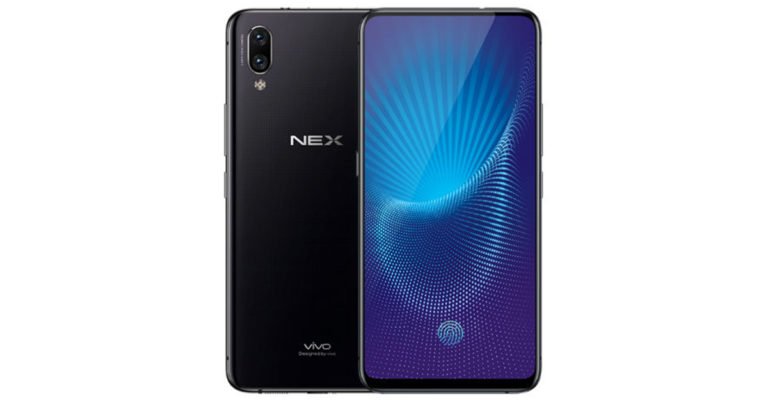
![[Video] Comio X1 Note Unboxing and First Impressions [Video] Comio X1 Note Unboxing and First Impressions](https://www.gadgetbridge.com/wp-content/uploads/2018/06/sddefault.jpg)
